
There is an immense variety of animals and other living beings on Earth. All are special and have unique qualities that make them both distinct and beautiful in their own way. There are all kinds of mammals, birds, fish or insects that fascinate us with their appearance and behavior. However, it is true that there are some which are more commonly known as being exotic. While this is a relative term, they are considered exotic due to their rarity and uniqueness.
Keep reading this AnimalWised article to discover, the most exotic animals in the world. By looking at this list of exotic animals with pictures, you will see some of the most compelling evidence as to why our planet is so special. We hope you will also see why it is so important to keep it protected from harm.
What makes an animal exotic?
The most common use of the term ‘exotic’ is relative. Its usage will largely depend on where you live. For example, if you live in the United Kingdom, a sloth will be a very rare sighting since they do not live wild there. However, if you live in certain parts of Costa Rica, it is fairly common to see a sloth when you are out walking in the wild. This shows that animals which are considered ‘foreign’ or ‘unusual’ will depend on the context.
What is a little more easy to define is when we use the adjective ‘exotic’ in relation to pets. In this usage, we are discussing pets which are not commonly kept domestically in a given area. A dog is not an exotic pet in the United States of America, but its relative the raccoon dog would be if it was kept as a companion animal.
The reason we need to make a distinction between exotic and non-exotic pets is due to how they are maintained. Some people are enticed by the idea of having a pet which is unusual, but often they are not kept as pets for a reason. Dogs, cats and other animals have gone through millennia-long processes of domestication. This makes them suited to living as a pet. Other animals have not. Taking them away from their wild habitat is often both cruel and dangerous.
A good example is the otter. While they are adorably cute, keeping otters as pets is usually not good for either the animal or the rest of the household. Keeping these animals as pets also helps to support an illegal exotic animal trade which runs on the abuse of animals and the destruction of wild animal populations and habitat.
Exotic animals are so appealing to us because they are rare and amazing. While we show you our list of the world's most exotic animals, we hope you keep in mind we should support their protection and conservation in the wild, not encourage keeping them as pets.
Slow loris (Nycticebus spp.)
The internet-famous slow loris is a type of primate that lives in Asia. Their evolutionary history is mysterious since only fossil remains of their ancestors have been found. The slow loris doesn't have any means of protection against their predators, so they developed a gland in their armpits that oozes venom. They lick the secretion and when mixed with their saliva it becomes active. They then bite their potential predators to envenomate. They may even apply the venom to the coat of their young to protect them.
They are a species threatened with extinction and their main predator is the human being. In addition to the deforestation of their habitat, illegal trade has resulted in drastic reductions in population numbers.
Possession of a Slow Loris as an exotic pet is illegal worldwide. In addition, the complicated task of separating a mother from her offspring ends in the death of the parent. It is also known that some traffickers tear their teeth out with tweezers or nail clippers to make them appropriate for children and to avoid poisoning, a horrific practice.
While it does not include the slow loris, you may want to see more exotic creatures in our list of the most venomous animals in the world.

Mandarin duck (Aix galericulata)
Hailing from China, Japan and Russia and introduced in Europe, the mandarin duck is a duck species appreciated for their great beauty. The male duck possesses a variety of incredible colors like green, fuchsia, blue, brown, cream and orange. Because of its color, they are seen as one of the most exotic animals in the world. While females are also beautiful, they have a much more muted coloration.
They usually inhabit areas close to lakes, ponds or lagoons. They are considered carriers of good fortune throughout Asia, as well as affection and conjugal love. In important weddings they are sometimes offered as the main gift.

Tapir
The tapir is a large herbivorous mammal inhabiting wooded areas of South America, Central America and Southeast Asia. It has one of the oldest families spanning about 55 million years. They have a very versatile trunk and are docile and calm animals. They are in danger of extinction, especially in Mexico, due to indiscriminate hunting, their low reproductive potential and the destruction of their habitat.
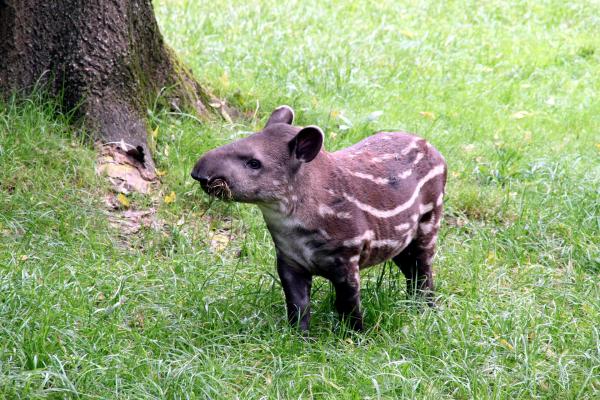
Pink grasshopper
It is common to see green, brown and even white grasshoppers. However, the pink grasshopper is of this color because of a recessive gene that they develop, unlike other grasshoppers. Although there is an isolated case of every 50,000, it is believed that the survival of this type of grasshopper is due to their color. This is mainly because they are no longer attractive to the eyes of predators.
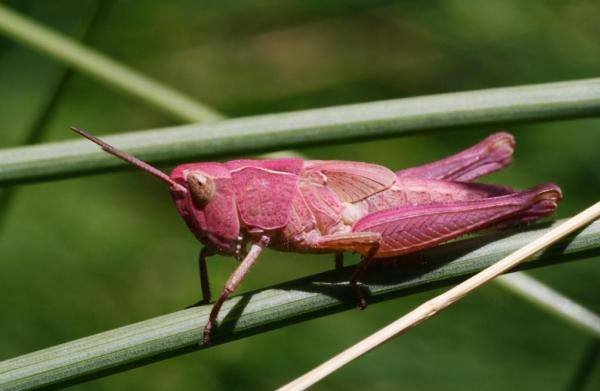
Peruvian giant yellow-leg centipede
The Peruvian giant yellow-leg centipede or Scolopendra gigantea is a giant centipede species found in the lowlands of Venezuela, Colombia, Trinidad and Jamaica. They are carnivorous animals that feed on reptiles, amphibians, and even mammals such as mice and bats.
They can exceed 30 centimeters in length and has poison pliers with which they can produce pain, chills, fever and weakness. Only one case of human death by the venom of the giant yellow-leg centipede in Venezuela is known.

Leafy seadragon
The leafy sea dragon, is a beautiful marine fish of the same family as the seahorse. Originally from Australia, they have long leaf-shaped extensions that are distributed throughout their body, which helps them camouflage themselves. This is one of the most desired exotic animals in the world.
They look like floating algae and because of their physical characteristics, they are the object of various threats. They are trapped by collectors and even used in alternative medicine. Their current status is of minor concern, yet they are protected by the Australian government.
Getting sea dragons for your aquarium is a difficult and expensive process as distributing them requires special licenses to ensure the proper origin or permits. Still, captive support is very difficult and most individuals die.
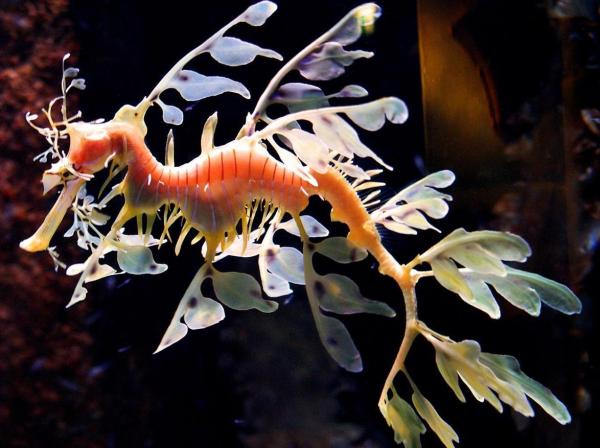
Fanfin Angler
The Fanfin angler inhabits the deepest and most hidden areas of the world's oceans and there is hardly any clear information about their behavior and life. They have a small luminous organ with which they attract their prey.
The difficulties they have in finding a mate in the dark means large females become hosts of the male that enters inside her body like a parasite - keeping them fertilized for life.

Japanese macaque
The Japanese macaque lives in the region of Jigokudani. They are the only primates adapted to extremely cold temperatures and their survival is due to the woolly mantle that they possess that isolates them from the cold. Accustomed to human presence, during the inhospitable winter, they spend long hours enjoying thermal baths, where they share with individuals of a higher social class. They have sex in a heterosexual and homosexual way.
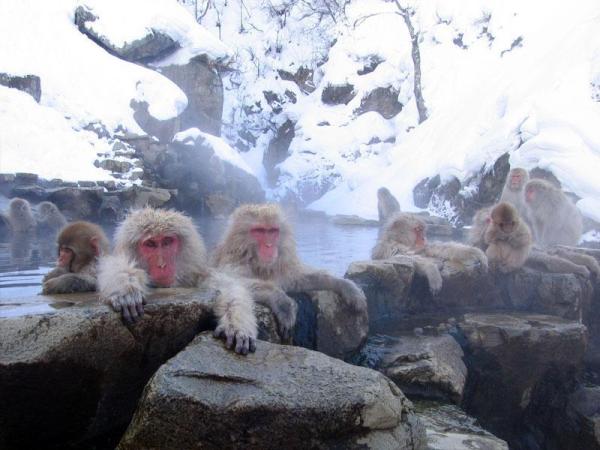
Pink dolphin
The pink dolphin lives in the tributaries of the Amazon and the Orinoco basin. They feed on fish, river turtles and crabs. The total population volume is unknown and is therefore included in the IUCN Red List. They are kept in captivity in some aquariums of the world, however, they are difficult to train which causes them high mortality to live in non-wild state. The pink dolphin is considered a true exotic animal because of its incredible character and color.

Liger
This is the hybrid produced between the crossing of the male lion and the female tiger. They can reach up to 4 meters in length and their appearance is large and bulky. There is no known adult male case that is not sterile. In addition to the liger, the Tigon is also known as the fruit of a cross between a male tiger and a lioness. Only one non-sterile case of Tigon is known.
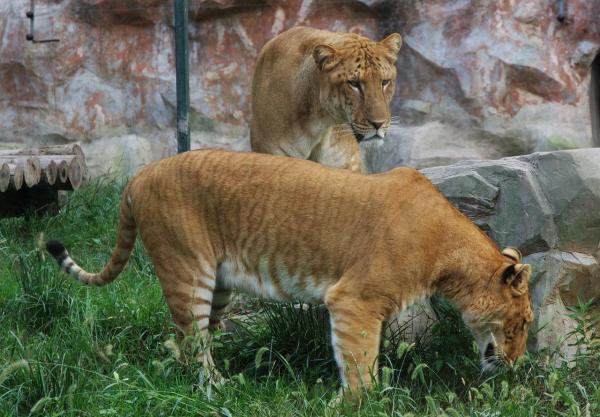
Atelopus frog
There are several species of Atelopus, known for their bright colors and tiny size. Most of them, already extinct in the wild, are maintained due to captivity. They become the most exotic family of frogs in the world for their variety of colors such as yellow and black, blue and black or fuchsia and black.
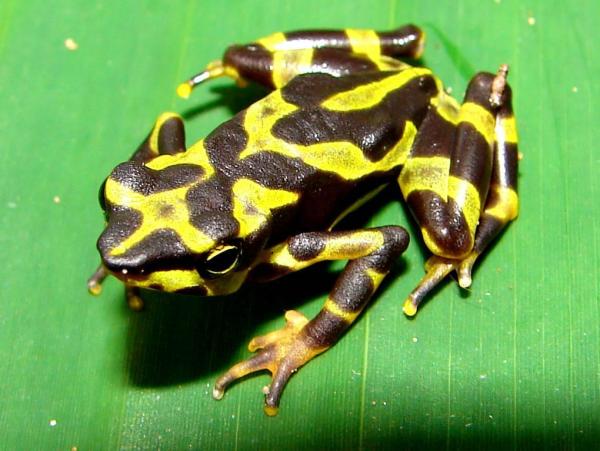
Pangolin
The Pangolin is a type of mammal with large scales and lives in tropical areas of Asia and Africa. Although they do not possess a primary weapon against predators, the powerful legs they use to dig have enough force to break a human leg in one swoop!
They also emit foul-smelling acids to ward off predators or hide by digging holes in record time. They live alone or in pairs and populations have been reduced by the excessive demand of their meat in China. They are known for non-existent medicinal powers and are victims of trafficking.
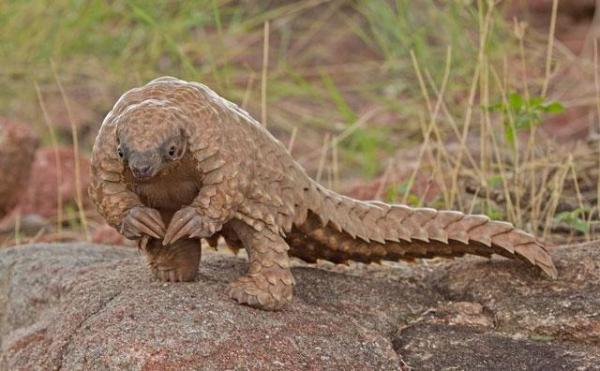
Fennec fox
To finish, we will show you the Fennec fox or desert fox. They are mammals that inhabit the Sahara and Arabia and are perfectly adapted to the arid climate. Their large ears are used as ventilation. They are not a threatened species but the CITES agreement regulates their trade and distribution for their protection. They are tremendously small reaching 21 centimeters high and 1.5 kilograms in weight. This adorable exotic animal is one of the most beautiful in the world.
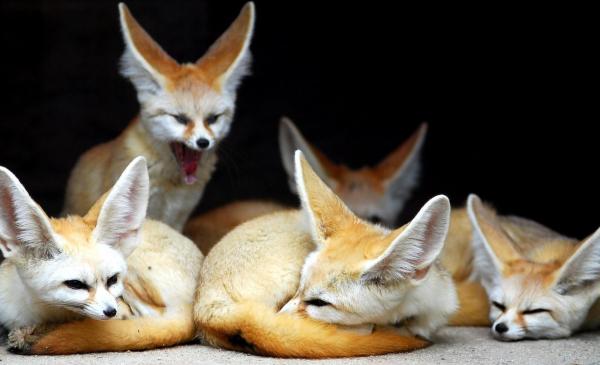
If you enjoyed this article you may be interested in the most endangered animals in North America and endangered animals in the Great Barrier Reef.

If you want to read similar articles to The Most Exotic Animals in the World, we recommend you visit our Facts about the animal kingdom category.